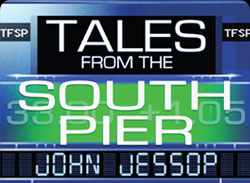What happened to the art of film criticism?
It was a question I fell to pondering last week, after
a discussion at a dinner party led me to compile a list of my favourite films.
Where, today, are the influential critics of the pre-and
post-war years, entertaining controversialists such as William Agee, Manny
Farber, Dwight MacDonald and Pauline Kael, writers who, in their commentary on
films as an important pop culture – in America, if nowhere else – helped
to shape the national conversation about the arts?
The obvious answer to the question is that the critics
disappeared because the films worth reviewing disappeared. With each passing year, fewer films are made
because of television, and the internet, and because production costs have virtually
eliminated commercial risk-taking. Those
films that do get made cater to a prepubescent audience enthralled by
computer-generated special effects, or to a demented constituency of adults,
mostly male, with a taste for the kind of mindless violence perpetrated by
perverse heroes toting weapons of localized mass destruction.
If the cinematic choice is largely between cartoons and
mayhem – between sinisterly luminous spaceships hovering above New York while
brave earthling survivors plot how to blow them up, and the mass slaughter
inflicted on earthly villains by Messrs. Schwarzeneger, Stallone, Willis,
Seagal and Statham – I’d sooner stay home and read a book, thank you.
Each time I pass by our local cinema, I glance at the
four titles on the marquee, and each time the conclusion is the same: there is
nothing I would wish to walk a quarter-mile to see – not even with the benefit
of a senior citizen’s half-price concession.
Films were always defined as low, meaning popular art,
but up to the Seventies – perhaps the decade that marks Hollywood’s high water-mark – the industry
carried a vestige of respectability by occasionally turning out worthwhile
products – films that might not have been universally compelling but which at
least paid the audience the compliment of having a decent script. Bonnie
and Clyde, The Graduate, The Godfather, The Godfather II, Nashville, McCabe and Mrs. Miller, Mash, Dog Day Afternoon – to name but a few
– were all worthy, if flawed, products.
None relied on CGI technology, each had a script by an acknowledged
craftsman, and each was beautifully photographed.
Now the box-office winners emerge as Mission
Impossible V and the umpteenth episode of Batman
or Spiderman. It is hard to imagine Kael devoting much space
to a caped crusader or a human arachnid.
Yes, of course there are a few exceptions – of recent
vintage The King’s Speech comes to
mind – but they are the exceptions that validate the rule.
When a medium becomes so unserious that it is not
worth writing about, then it is clearly on its last legs.
RIP
—-


Be First to Comment